Baoguo Temple fair offers mix of histories, modern classics and information-dense texts
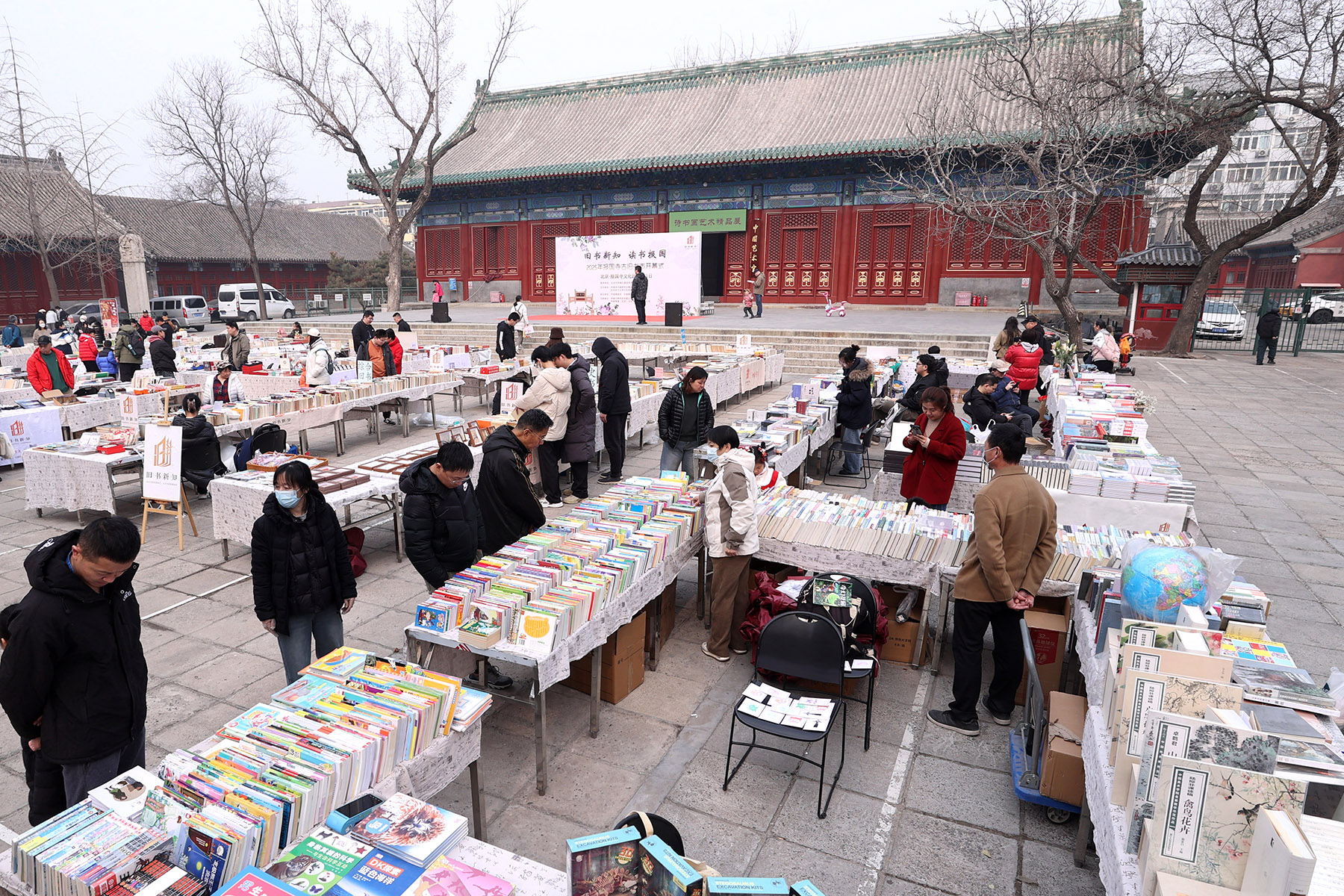
While electronic devices are considered a convenient way to read a book nowadays, published books still hold sway with bibliophiles who love ink and paper.
Many of them spend their spare time browsing stores and markets of antiquarian and secondhand books in search of physical works they believe better convey a narrative or the zeitgeist of a particular era.
Baoguo Temple Old Book Market in Xicheng district, Beijing, is one such venue.
Open from 9 am to 6 pm every Saturday and Sunday from March to October, the old book market was famous during the late Ming (1368-1644) and early Qing (1644-1911) dynasties.
Beijing native Liu Yisu, 42, is a huge fan of old books and said he has a collection of more than 10,000 in his home.
READ MORE: Readers book date with recycled works
He went to the Baoguo Temple Old Book Market fair the second day it opened in March this year, and purchased seven old books. They included two thread-bound collections of classical Chinese poems and essays, three featuring old Beijing, a history of how ancient Chinese books were handed down, and a book about the twilight years of the Qing Dynasty Emperor Kangxi.
"Because these kinds of thread-bound books are rare and their paper is fragile. What often happens is that once I buy one, I put it away for safekeeping," said Liu.
"Then, I find a modern or electronic version to read instead."
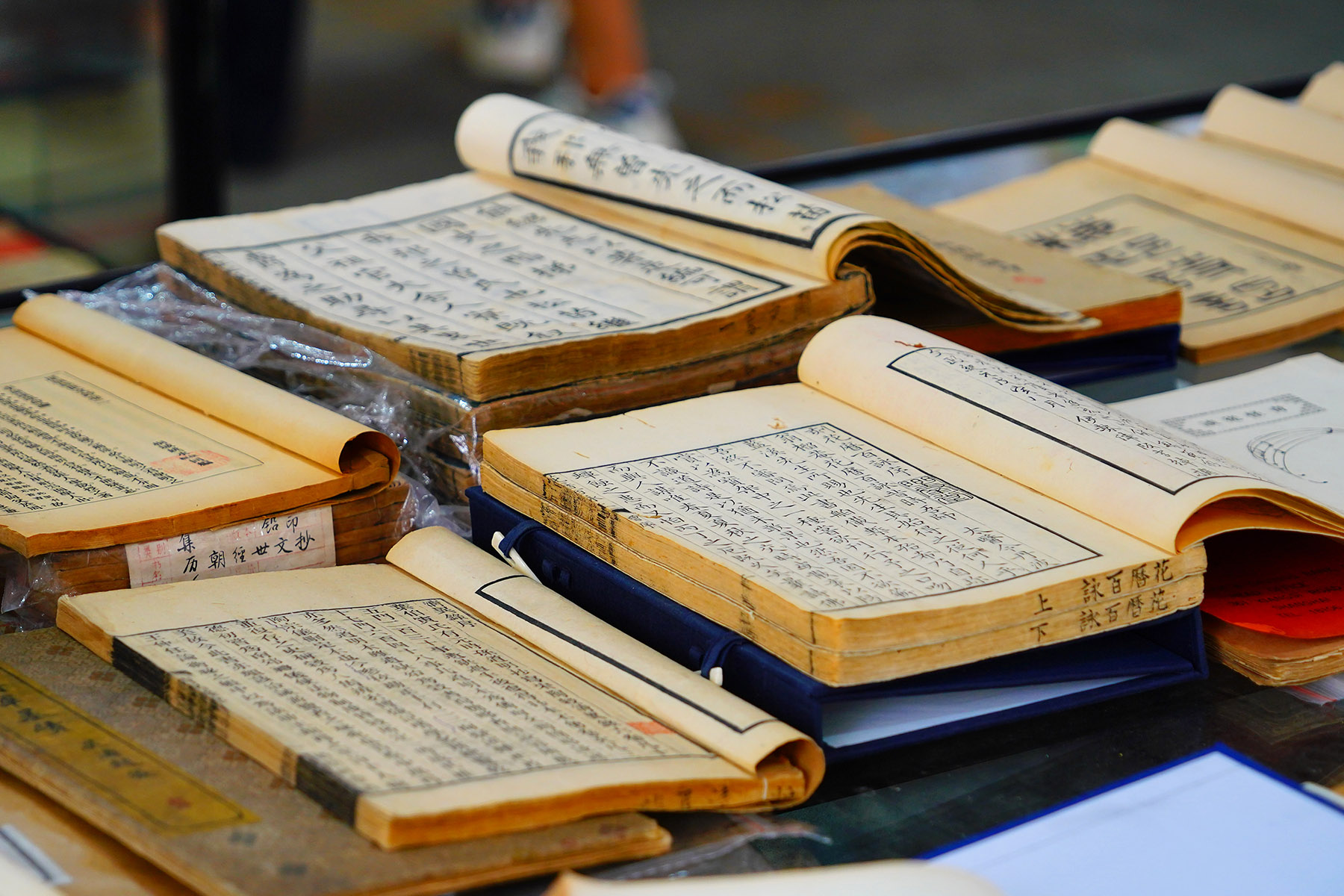
Shared history
Baoguo Temple Old Book Market shares its history with the rise of Beijing as a city. After Emperor Shunzhi, the first emperor of the Qing Dynasty to enter Beijing, designated Beijing as the capital, the city's southern region became a hub where ethnic Han officials, scholars, and imperial examination candidates gathered.
One of the few pastimes for the examination candidates was strolling through the Baoguo Temple market, where many books that were useful to them were available.
The book market's popularity faded in the late Qing Dynasty when the imperial examination system was abolished.
Since the market reopened at the end of 2023, it has experienced a resurgence in popularity, attracting readers and booksellers from across the city. During a book festival in March last year, the market, which has 300 booths, drew 10,000 visitors at weekends.
The books offered at the market range from literary masterpieces, to historical classics, natural science, and geography texts. If they are in very good condition, or the copies are old and rare, some can demand prices up to 2,000 yuan ($280).
Liu said a large number of the old books he collects are rich in information and serve as resource materials.
He has built up a personal reference library and is able to look up details when he needs information on a place he plans to visit, write an article, or simply improve his knowledge to be better informed when he engages in conversation.
Compared with unverified online material, published books provide a dependable source of information because they've been edited and vetted, he said.
When people ask him whether he's read every book in his "impressive" collection, he simply answers that every book should be read to get its full value. Much of his book-hunting is random and not pre-planned, he said.
"It's more about what I happen to come across," said Liu, who has been browsing Beijing's book markets for 20 years.
"Sometimes, an old book fair can offer a lot of pleasant surprises. There are many instances where I didn't know a certain book existed beforehand. But then I'd see it in an old book market and discover that a writer, a poet, or a novelist had actually written a book on that topic."
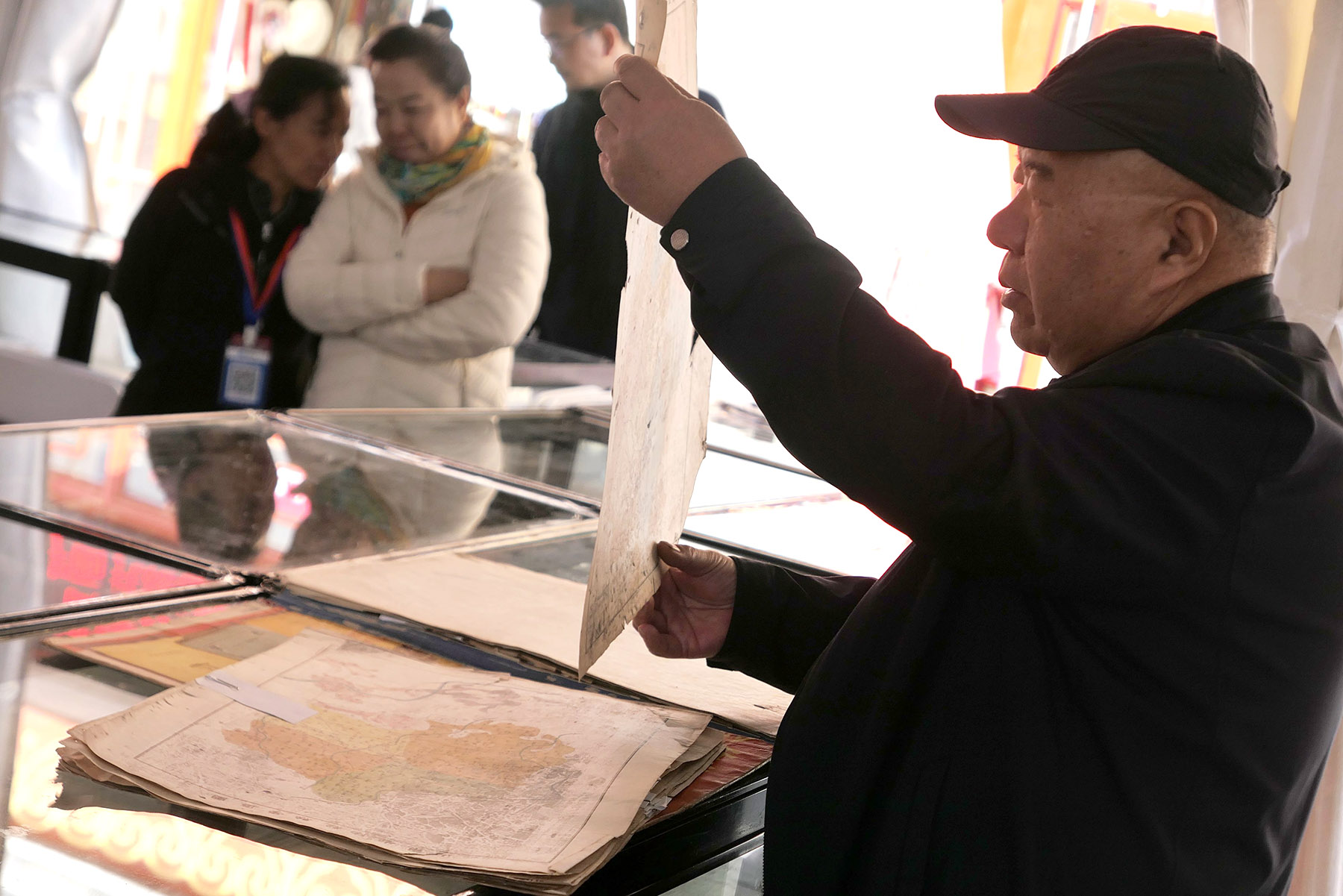
Lower prices
Zhang Huiwei is a 62-year-old vendor for Kongfuzi Jiushu website, reputedly the world's largest online trading platform for old books.
He is also one of Kongfuzi's first merchants and has been involved in the book trade for over 20 years.
On a recent Saturday morning in May, he had already set up his stall at Baoguo Temple Old Book Market by 8:30 am. The stall had the comforting smell of aged paper, and flecks of dust could be seen dancing in the morning sunbeams.
He carefully placed some fragile books from the early 1900s in transparent plastic covers to protect them from further deterioration.
Zhang isn't one for small talk, but he was happy to talk with customers interested in his offerings.
He said few of his customers are genuine collectors and the majority will haggle for a better price. "I know most readers who come to buy books from me don't want to buy expensive ones. Their main thought is, 'The book has to be good, and it has to be cheap'," he said.
Zhang said his best deal is 10 yuan for three books. His pricing strategy is based on several aspects and he can charge up to 80 yuan for some titles.
The first consideration in setting a price is when the book was published. Basically, the older the book, the higher the price. Books from the Republic of China period (1912-49) are more expensive. After that, prices gradually decrease for books from the 1950s and 60s, to the 70s and 80s, and to the present day.
"Our books were originally priced low. But because they're old now, their value has gone up, and they are also in line with current market prices," he explained.
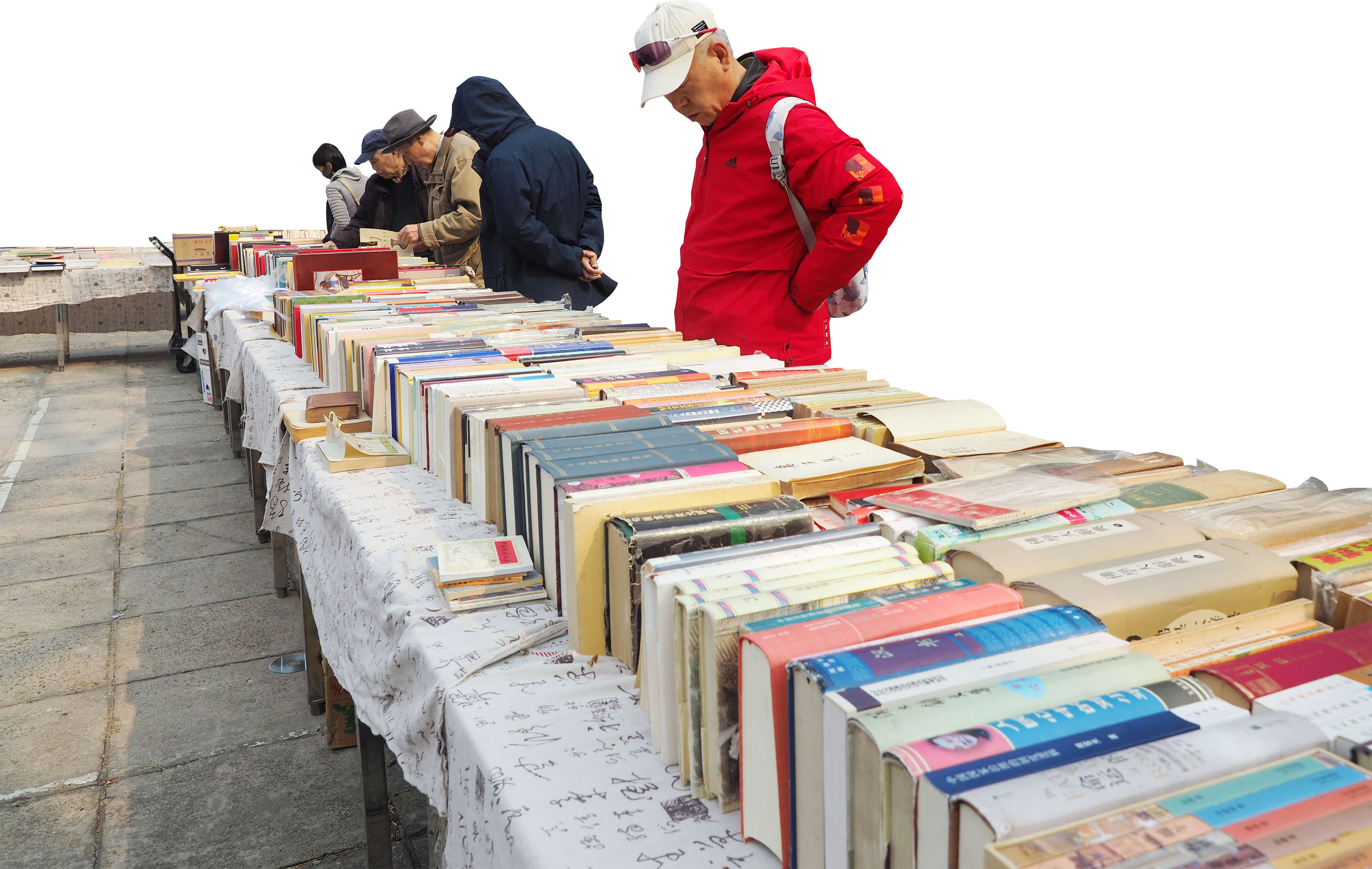
Another pricing consideration is whether the books were published by major publishing houses and what edition they are. Books from large publishers like the People's Literature Publishing House, Zhonghua Book Company, and the Commercial Press generally fetch a good price, depending on their condition, he said.
The content is also a determining factor. Works on literature, art, philosophy, and history are the most popular with readers, Zhang said.
One regular customer recently visited his stall and in less than half an hour picked out over a dozen books. Among them were hardcovers from the 1950s and 60s, as well as paperbacks published after 2000.
"I never really recommend books to customers, because I don't know their preferences; what could I suggest?" he said. "No matter how cheap a book is, if they don't want it, there's nothing you can do. On the other hand, some people see a book and their eyes just light up — those are the ones who truly want (to buy) the books."
Regular patrons don't bother to ask details of what's on offer. Every time they visit they are aware of what's new on display, he added.
For Zhang, who once worked in the printing industry and later in the hardware business, reading new books doesn't feel "as comfortable" as reading old ones.
He cited an example of the four volumes of A Dream of Red Mansions published in 1972, which were printed on copperplate paper, exquisitely bound, and comfortable to read. By comparison, modern books are often printed on "bright" white paper and are uncomfortable to read. "It's like watching a computer screen," said Zhang.
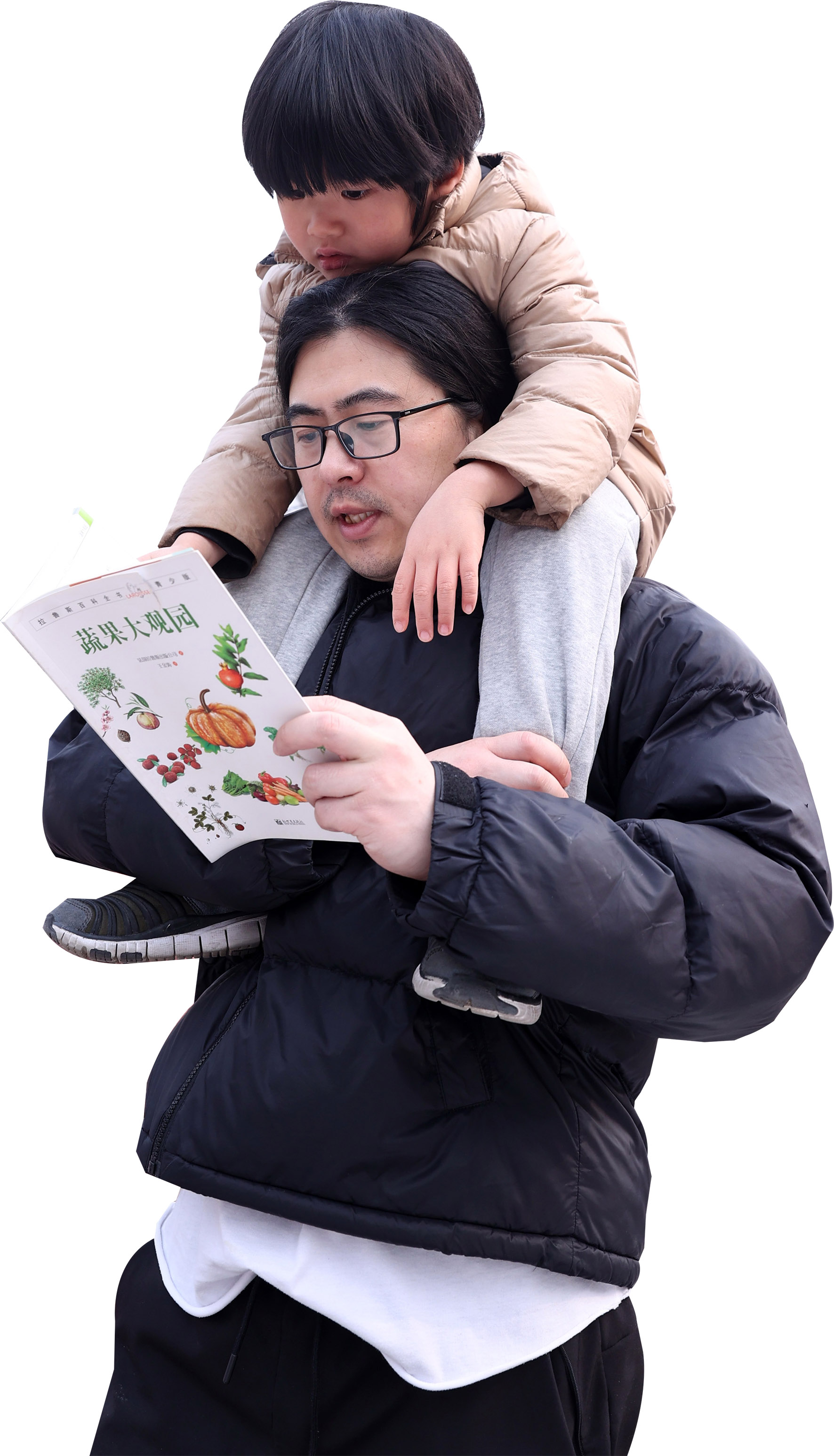
Cultural lineage
Baoguo Temple's old book market proves that even non-bestsellers are worthwhile to someone.
Sun Yutian, CEO and founder of Kongfuzi Jiushu website, said a significant number of book enthusiasts aren't scholars or professors. However, many are contributing to the documentation of cultural changes in their own way.
One market customer recently purchased an old book and found a 1987 junior high school graduation diploma inside. They posted it on the social media platform RedNote and found the person who owned the diploma. "They weren't just saying diplomas existed; they were sharing stories related to them," said Sun.
The underlying purpose of this community of book collectors is the preservation and inheritance of traditional Chinese culture, he said.
An important function of the market is the protection of historical and cultural documents, ancient texts and old books — even those from before the founding of New China, Sun said.
"Their purpose isn't necessarily for you to read them cover to cover. They exist, instead, to show that the inheritance of Chinese civilization and culture lies within these materials," said Sun. "This is because their primary value isn't their content or specific editions, but rather what they represent."
Considering China's millennia-old civilization, there's a continuous, unbroken cultural lineage that includes the nation's publishing history.
"When we look at this, just like a library, and compile these elements from various sources, these very items demonstrate that across different dynasties … they all represent a unified transmission of Chinese culture and civilization," he said.
ALSO READ: Beijingers unwind in 'hush hour' as community libraries spread
"We believe these types of books are meant for cultural dissemination and are integral to the preservation of traditional Chinese culture. While they have also contributed to the printing industry flourishing, their purpose isn't for mass public reading."
In the more than two decades Sun has run Kongfuzi, he has observed that the online and offline book markets are closely connected.
Many book collectors trade with each other, whether online or offline. They also spend a lot of time offline discussing and "authenticating" books.
For instance, Liu, the book enthusiast, dedicates a lot of time to book hunting in different markets across Beijing and meeting friends through books.
Zhang, the seller, said when he was younger he would search for interesting books on Thursday night and early Saturday morning at Panjiayuan market in the capital's Chaoyang district.
Being surrounded by books is a haven for bibliophiles, and the friends they've made through books are an integral part of their social circle.
"What we're trying to do is to make more books available so more interested readers can see them," said Sun. "What you can buy with money isn't necessarily what you'll like; developing genuine appreciation for something takes years of dedication."
Contact the writer at xinwen@chinadaily.com.cn


